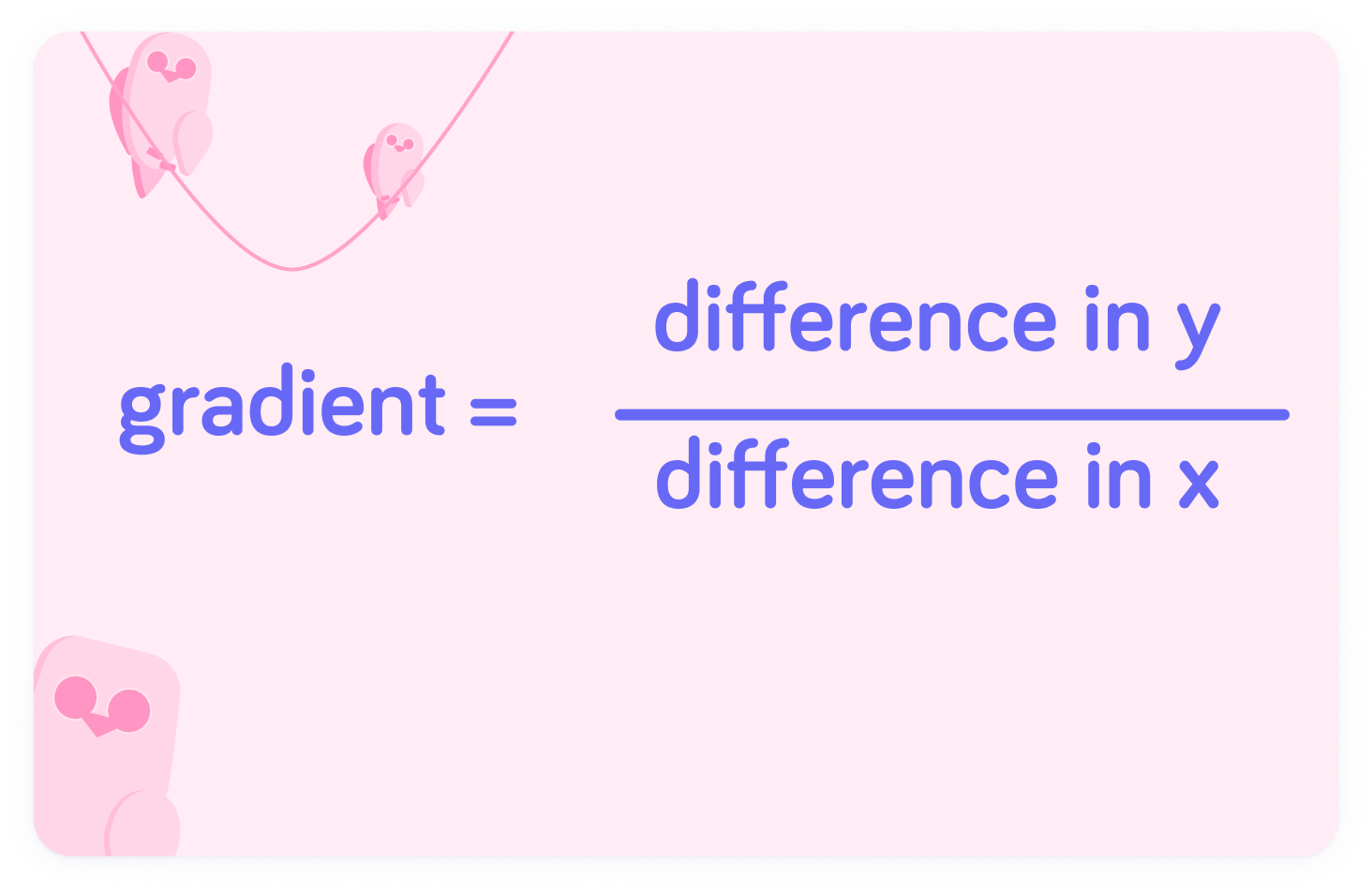YOU ARE LEARNING:
Straight Line Graphs 3

Straight Line Graphs 3
We can identify the gradient and y-intercept if we are given a set of coordinates which feature on a line.
The gradient can be found by using a formula with coordinates located on a line.

Find the gradient of the line joining (3,4) and (5,6)

Let's find the equation of a line when we do not know the y-intercept.
For example, let's find the equation of the line joining (6,20) and (4,14)
We can't immediately see the y-intercept
Neither of the points have an x value of 0, so neither of them are the point at which the line crosses the y-axis.
Start by finding the gradient
Remember the formula: difference in xdifference in y
What is the gradient between these points?

Substitute the gradient into the equation
Now we have a value for m, we can put this into an equation containing one of the points. Remember, the coordinates contain the x and y values at that point.
Let's do this for the point (4,14)
For y=mx+c, 14=3(4)+c. We can rearrange this to find c.
Subtract 12 from both sides
14−12=12+c → c=2
Nice! 😎
Now we know mand c, we can see that our equation is y=3x+2. You can check this by substituting in the values of the other point.
